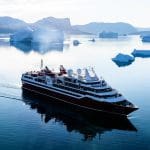Food waste contributes to global emissions through the various stages of food production and consumption chain, which in turn contribute to climate change. The food industry is responsible for about 25% of global greenhouse gas emissions, where agriculture has caused 73% of all deforestation and land conversion. Shockingly 1/3 of all food produced is wasted, either in the supply chain or thrown away, yet 828 million people regularly experience hunger every day, that’s about 10% of the world’s population.
Here are some keyways in which food waste contributes to global emissions:

- Production Phase:
Land Use Change: The conversion of natural ecosystems into agricultural land releases stored carbon and reduces the land’s ability to absorb carbon.
Deforestation: Clearing land for agriculture, often accompanied by burning, releases large amounts of carbon dioxide into the atmosphere.
- Transportation and Distribution:
Energy Consumption: The transportation of food products over long distances requires energy, typically derived from fossil fuels, leading to the emission of greenhouse gases.
Refrigeration: The need for refrigeration during transportation and storage contributes to energy consumption and emissions.
- Processing and Packaging:
Energy Use: Processing and packaging of food products involve energy-intensive activities, leading to emissions.
- Consumption and Disposal:
Methane Emissions from Landfills: When food waste ends up in landfills, it decomposes anaerobically, producing methane, a potent greenhouse gas that is more effective at trapping heat than carbon dioxide.
Wastewater Treatment: Food waste in wastewater treatment systems can produce methane and nitrous oxide emissions.
- Loss of Embedded Energy:
When food is wasted, all the energy that went into producing, processing, and transporting it is also wasted.

Reducing food waste can therefore help mitigate its impact on global emissions. Efforts such as better food storage, improved supply chain management, and consumer awareness can contribute to reducing food waste at various stages of the food system. Additionally, diverting food waste from landfills through composting or anaerobic digestion can help minimize methane emissions. Sustainable practices in agriculture, such as regenerative farming and agroecology, can also contribute to reducing the environmental impact of food production.
So, what can we do to help reduce food waste?

Reducing food waste is a commendable goal that can help save money, conserve resources, and minimize environmental impact. Here are some practical tips to help you reduce food waste:
- Plan Your Meals:
Plan your meals for the week before grocery shopping.
Create a shopping list based on your meal plan to avoid buying unnecessary items.
- Buy Wisely:
Purchase only what you need, especially perishable items.
Consider buying in bulk for non-perishable items to reduce packaging waste.
- Understand Expiry Dates:
Pay attention to expiration dates and try to consume perishable items before they expire.
Understand the difference between “sell by,” “use by,” and “best before” dates.
- Proper Storage:
Store perishable items correctly to extend their freshness.
Use airtight containers and consider using the refrigerator or freezer for items that can be frozen.
- First In, First Out (FIFO):
Practice the FIFO method when storing food, placing older items at the front and newer items at the back. This ensures that you use older items first.
- Portion Control:
Be mindful of portion sizes when preparing meals to avoid leftovers that may go to waste.
- Leftovers Management:
Get creative with leftovers by incorporating them into new meals.
Consider freezing leftovers for future use.
- Composting:
Compost food scraps instead of throwing them away. This reduces landfill waste and produces nutrient-rich compost for your garden.
- Donate Surplus Food:
If you have excess non-perishable items or canned goods, consider donating them to local food banks or shelters.
- Educate Yourself:
Learn about proper food storage, preservation methods, and the shelf life of different items.
- Be Mindful When Dining Out:
Consider sharing dishes or taking home leftovers when dining at restaurants.
If eating out, avoid buffets, nearly half of the food at buffets is wasted.
- Use Apps and Tools:
Use apps that help you track and manage your food inventory, and provide recipes based on the ingredients you have.
- Support Ugly Produce:
Purchase imperfect or “ugly” produce that may otherwise go to waste but is still perfectly edible.
- Educate Others:
Share information about reducing food waste with friends, family, and community members to create awareness.
By incorporating these practices into your daily routine, you can contribute to minimizing food waste and its environmental impact.
#reducefoodwaste #reduceemissions #climateaction #trees4events
Photo in News
Recent Posts

















